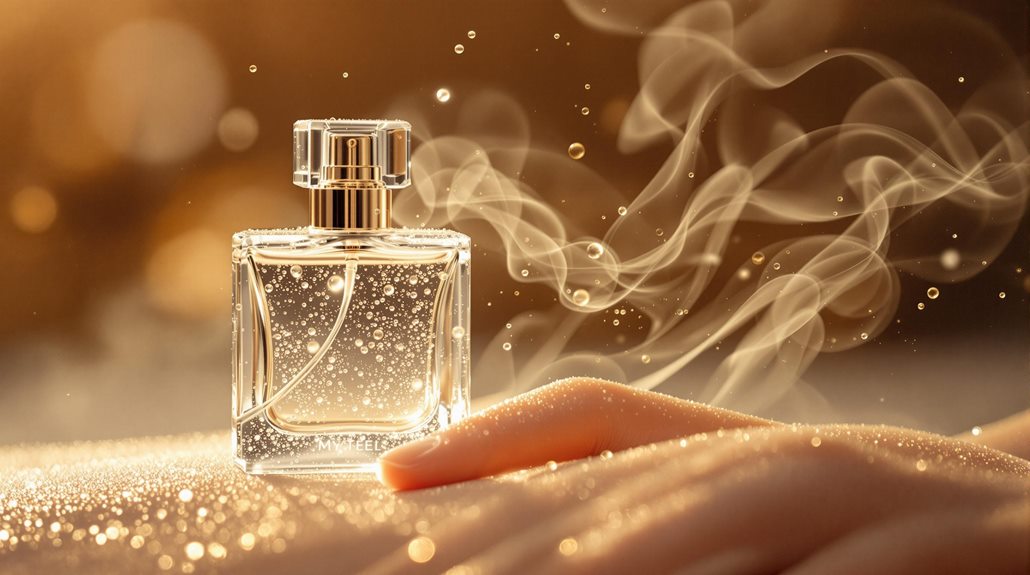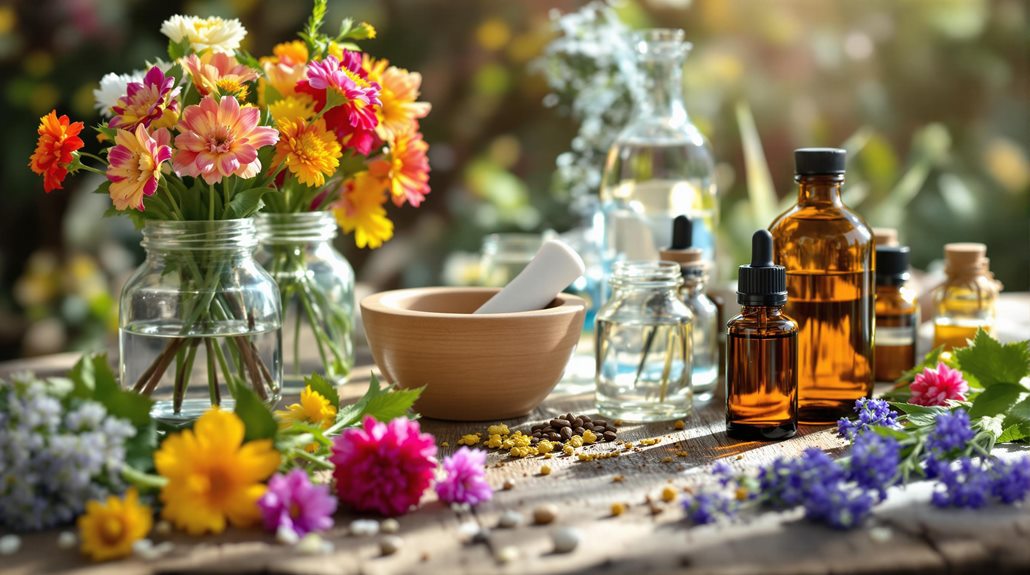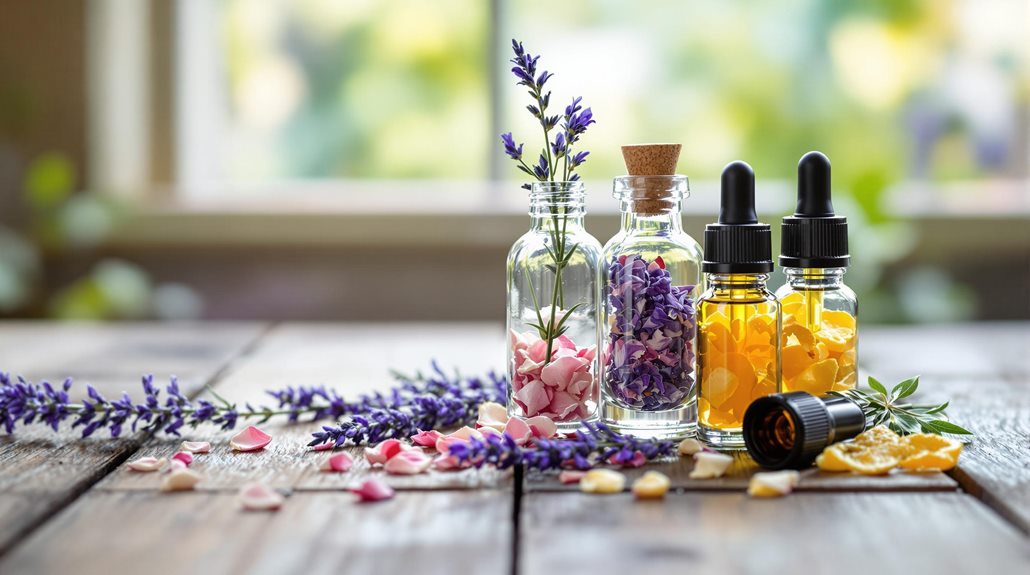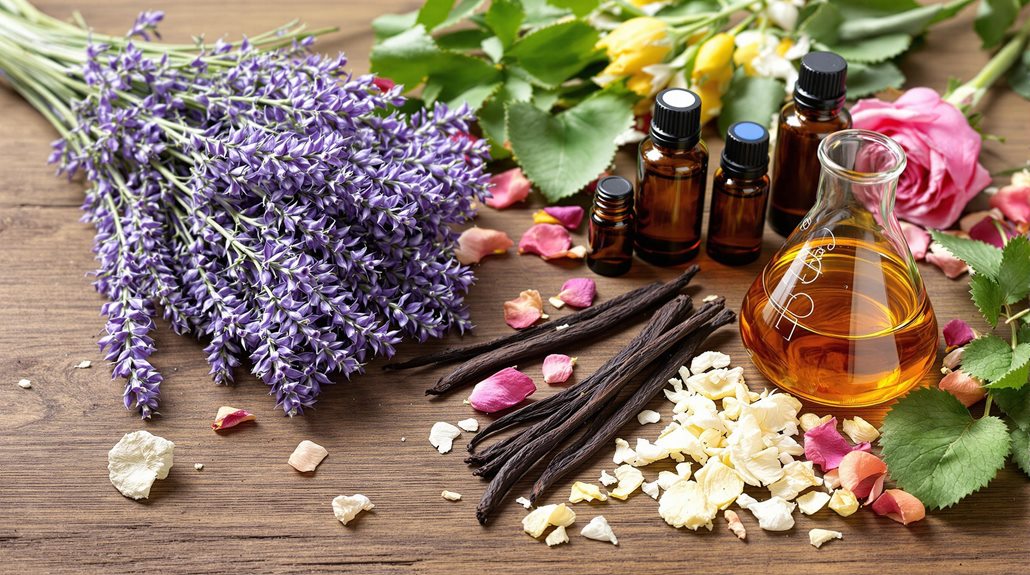How to Make and Sell Your Own Perfume: A Complete Guide
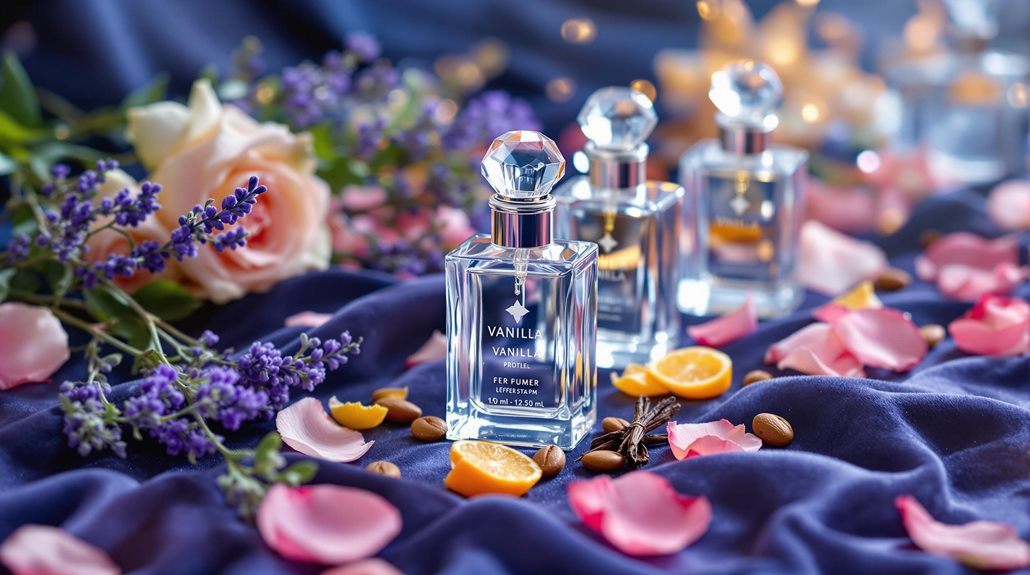
Making and selling your own perfume requires careful planning and a solid understanding of your target market. You'll need essential equipment like amber glass bottles, digital scales, and quality ingredients including essential oils and carriers. Start by developing your signature scent through experimentation with different fragrance notes, then focus on creating distinctive branding and packaging. You must comply with legal requirements and regulations while managing production costs, which typically range from $8,000 to $10,000 for an initial 200-bottle run. Successful perfume entrepreneurs combine creative fragrance development with strategic marketing to build a lasting brand - a voyage that unfolds with each carefully planned step.
Understanding Your Target Market
Success in the perfume industry hinges on knowing exactly who you're creating for. Your target market will influence everything from your essential oils selection to your bottle design, so it's fundamental to get this right from the start of your business plan.
Research shows that women make 60-70% of men's fragrance purchases, making them a pivotal demographic to analyze even when creating masculine scents. You'll need to determine whether you're developing a quality fragrance for day or night use, specific age groups, or particular lifestyle preferences. Ponder the message you want your perfume to convey and its unique selling proposition in the market.
Your fragrance should establish a psychological connection with your target audience. Think about how your brand will represent abstract concepts like femininity or masculinity, and how these align with your intended market's values. Don't limit yourself to just selling the scent - incorporate sensory marketing techniques to create a more engaging experience. By understanding consumer trends and preferences in your chosen demographic, you can develop a perfume that resonates with your target market and stands out in a competitive industry.
Essential Equipment and Ingredients
Creating your own perfume starts with assembling the right tools and materials. You'll need a collection of amber glass bottles to store your ingredients and final products, as these protect your fragrances from light damage. A precise digital scale is essential for measuring your ingredients accurately, while beakers and graduated cylinders help you maintain proper proportions during mixing.
For your ingredients, you'll want to stock up on essential oils, which form the foundation of your scent profiles. These oils are organized into top, middle, and base notes to create a well-balanced fragrance. You'll also need carrier oils to dilute your essential oils, making them safe for skin application. Alcohol serves as a key ingredient for dispersing the oils, while distilled water helps achieve the appropriate concentration.
Proper storage is paramount for maintaining your ingredients' quality. Keep your supplies in a cool, dark place, and always handle them with clean droppers to prevent contamination. Remember to label everything clearly, including creation dates and ingredient lists, to ensure consistency in your future batches. With these tools and materials properly organized, you're ready to begin crafting your signature scents.
Developing Your Signature Scent
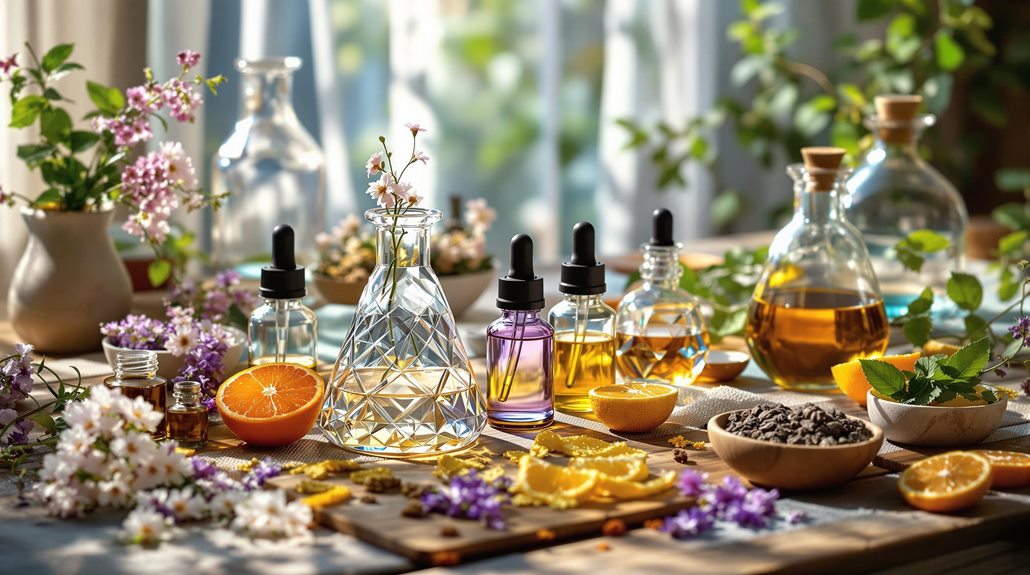
When developing your signature scent, you'll need to command the art of blending different fragrance families and understanding how they interact. While creating a perfume, it's vital to experiment with various combinations of top, middle, and base notes to achieve a balanced and appealing composition that reflects your desired type of fragrance.
Modern perfumery often employs sophisticated techniques like headspace analysis, gas chromatography, and mass spectrometry to analyze and replicate scents with precision. However, if you're just starting, you can begin with traditional blending methods and gradually incorporate state-of-the-art tools as your knowledge grows. Working with a professional perfumer can remarkably accelerate your learning curve and help you avoid common formulation mistakes.
Start by sourcing high-quality ingredients from reputable suppliers to ensure consistency in your final product. Test each iteration of your fragrance thoroughly, paying attention to how the scent evolves over time, its projection on skin, and its overall longevity. Document your blending ratios and keep detailed notes of successful and unsuccessful combinations. This systematic approach will help you refine your formula until you achieve the perfect signature scent for your brand.
Branding and Packaging Design
With your signature scent perfected, the next challenge lies in presenting it to the world through alluring branding and packaging. Your perfume's visual identity must create an emotional connection with your target audience while effectively communicating its unique essence.
Start by designing a distinctive bottle that captures your fragrance's personality. The bottle design isn't just about aesthetics; it's your product's first physical touchpoint with customers and should reflect your brand's values. Consider how elements like shape, color, and texture will influence perception and create shelf appeal.
Your branding strategy should encompass all sensory elements. Develop packaging that protects your perfume while telling your brand's story through carefully chosen materials, colors, and finishes. Include sampling options like scent strips or perfume pearls to let customers experience your fragrance firsthand. Remember that every visual and tactile element, from the box to the promotional materials, should work together cohesively.
Create a consistent brand identity across all touchpoints, ensuring your logo, typography, and design elements align with your target market's preferences. This cohesive approach will help establish your fragrance's market position and build lasting brand recognition.
Legal Requirements and Regulations
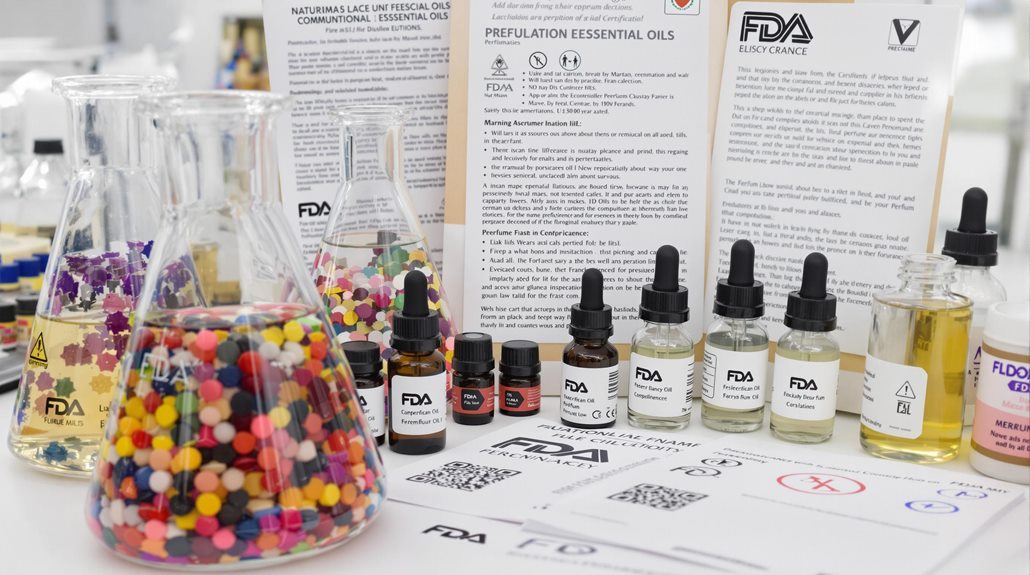
Compliance forms the foundation of any legitimate perfume business. Before your perfume launch, you'll need to meet several legal requirements set by regulatory bodies like the FDA and EU cosmetic regulations if you're planning to sell internationally.
You'll need to register your business entity and obtain necessary permits and licenses. This includes getting your formulation tested for safety, creating detailed ingredient lists, and implementing quality control measures throughout your production process. Make sure you understand labeling requirements, which must include your business name, product weight, and complete ingredient disclosure.
The upfront investment in legal compliance might seem challenging, but it's non-negotiable. Your finished product must undergo stability testing and safety assessments. You'll need to maintain detailed documentation of your manufacturing processes, ingredient sources, and batch records. Additionally, you must secure product liability insurance to protect your business from potential claims.
Consider working with a regulatory consultant who specializes in cosmetic compliance. They can help you maneuver complex regulations, confirm proper documentation, and avoid costly mistakes that could delay your launch or result in legal issues.
Manufacturing and Production Process
The manufacturing and production process builds directly upon your legal compliance groundwork. When you start a perfume line, proper planning and sequencing are essential for success.
Your first step should be sourcing the necessary components before creating your fragrance. You'll need to secure reliable suppliers for bottles, caps, pumps, and packaging materials that complement your intended scent profile. The things you need include not only these physical components but also the proper equipment for mixing and storing your perfume ingredients.
The cost to start production can range from $8,000 to $10,000 for an initial run of 200 bottles using a pre-made fragrance. While larger companies typically require minimum orders of 1,500 to 2,000 pieces, you can make your own perfume in smaller batches to keep costs manageable when starting out. This approach gives you more control over quality and inventory.
When mixing your fragrance, follow a precise order of ingredients, carefully combining top notes, middle notes, and base notes to achieve the desired scent. Consider working with smaller quantities initially, as this allows you to perfect your formula while minimizing financial risk.
Marketing and Distribution Strategies

Successfully marketing and distributing your perfume requires a multi-channel approach that combines both digital and traditional methods. Start by leveraging social media platforms to create engaging content showcasing your perfume line. Use Instagram, Facebook, and YouTube to share behind-the-scenes glimpses, product demonstrations, and customer testimonials.
Focus on connecting with your target audience through local events. Participate in craft fairs, pop-up shops, and fragrance festivals where potential customers can experience your scents firsthand. These venues provide meaningful opportunities for direct feedback and building relationships with loyal customers.
Consider expanding your distribution channels by partnering with specialty boutiques, online marketplaces, and department stores. Offer sample vials and travel-size options to encourage trial purchases and minimize risk for new customers. This strategy helps build trust and confidence in your products.
Develop a strong branding strategy that sets your perfume line apart. Create cohesive visual elements, packaging, and messaging that resonate with your target market. Your brand identity should reflect the unique qualities of your fragrances while maintaining consistency across all marketing materials and distribution channels.
Conclusion
Starting your own perfume business isn't just about creating beautiful fragrances - it's about building a brand that appeals to your target market. You'll need dedication to command the technical aspects, creativity to develop unique scents, and business savvy to steer regulations and marketing. With the right approach and persistent effort, you can alter your passion for perfumery into a successful business venture.

